
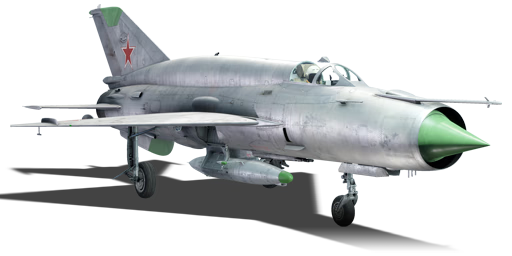


During the early 1970s, the issue of low range in the MiG-21s was brought to attention of the higher ups in the Soviet Union and the Mikoyan design chain. The issue caused by high fuel consumption of the R-13 engine coupled with the small amount of fuel carried on board in this interceptor's small airframe. Two solutions were quickly devised, the first being a upgraded, more efficient engine, which would not be ready for a while. The other solution was to simply hammer in a larger fuel tank into the MiG-21's airframe. The resulting design for the second solution was the MiG-21SMT (Sapfir Modernizirovannyy Toplivo, "Sapphire Modernized, Fuel [Increased"). This variant featured a plethora of upgrades, namely the updated model of the Sapfir radar and its respective fire control system, allowing the aircraft to use not only R-3R radar guided missiles, but the latest R-60 and R-60M close range missiles. But the largest difference in this variant was the increased fuel load from the comically large saddle tank added, earning this variant the nickname "Hunchback" among its pilots, who strongly disliked flying it. The SMT also featured a strongly upgraded engine, to cope with the weight increase of the extra fuel and new avionics, but this was sadly not enough to appease the pilots, who found the SMT to be generally unfavourable to fly compared to the older, lighter, and more nimble Fishbeds. The "Hunchback" was so unpopular with Soviet pilots (who regularly complained to their higher ups about the SMT), that all MiG-21SMTs were rebuilt into the MiG-21ST variant starting from 1972, which was essentially just a MiG-21SMT with the smaller (and lighter) saddle tank from the MiG-21bis.
The MiG-21SMT (NATO Code: Fishbed-K) was introduced in Update 1.95 "Northern Wind". Being the first Soviet fighter in the game with access to countermeasures, this aircraft opens many new doors to pilots of the Soviet tree. The SMT also brings with it many new weapons to the Soviet fighter line, such as the R-3R radar missile and the deadly R-60 close range missile. In addition to the under-the-hood upgrades, the SMT also features a very strong engine, allowing for fast acceleration and great top speed, and also features a massive increase in fuel capacity, resulting in a steep weight increase. All of these changes from previous fighters require pilots of the MiG-21SMT to completely re-learn how they fly and engage enemy aircraft, as the SMT will very quickly bleed its speed during almost any manoeuvre, but on the other hand can easily gain it back if it disengages safely and flies straight using the powerful engine. Most importantly, this aircraft acts as a decisive criterion in the play style of the Soviet jets that follow it. Players who enjoy this aircraft for its flight performance and ability to dogfight most of its adversaries up close should move on to research the foldered MiG-21bis, the ultimate Soviet MiG-21 model, while those that favour this aircraft's avionics and missile advantages over its opponents may wish to advance directly to the MiG-23M Flogger, a radically different design which relies much more on its strong missiles and avionics than its flight performance.
flaps
flaps
flaps
brake
| Belt | Belt filling | Armor penetration (mm) at a distance: | |||||
|---|---|---|---|---|---|---|---|
| 10 m | 100 m | 500 m | 1000 m | 1500 m | 2000 m | ||
| HEFI-T/AP-I/HEF-I | 31 | 29 | 21 | 15 | 10 | 7 | |
| HEF-I/AP-I/AP-I/AP-I | 31 | 29 | 21 | 15 | 10 | 7 | |
| HEFI-T/HEF-I/HEFI-T/HEF-I/AP-I | 31 | 29 | 21 | 15 | 10 | 7 | |
| AP-I/HEF-I/HEF-I | 31 | 29 | 21 | 15 | 10 | 7 | |
| Name | Weight | Slot | ||||
|---|---|---|---|---|---|---|
| 75.3 kg |  |  |  |  | ||
| 75.3 kg | 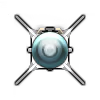 |  |  |  | ||
| 43.5 kg | 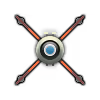 |  |  |  | ||
| 235 kg | 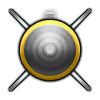 |  |  |  | ||
| 16 × | 110.2 kg |  |  |  |  | |
| 250 kg |  |  |  |  | ||
| Drop tank (490 liters.) | 70 kg |  |  | |||
| 32 × | 225.5 kg |  |  | |||
| 478 kg |  |  | ||||
| 374 kg |  |  | ||||
| Drop tank (490 liters.) | 70 kg |  | ||||
| 64 × Сountermeasures | 5.8 kg | 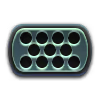 | ||||












Flight performance |
|---|
Survivability |
|---|
Weaponry | |||
|---|---|---|---|